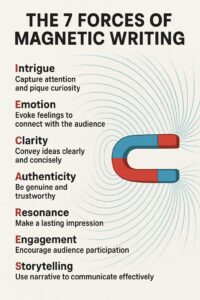The Hidden Cost of Poor Communication in Organizations
By Azuka Onwuka

Photo credit: COTTONBRO
Hidden Cost of Poor Communication in Organizations
When organizations look for wasted money, they check travel, software licences or vendor contracts. They rarely look at an aspect of management where the bigger leak frequently exists, because it is usually invisible. What is that resource drain? Poor communication.
Unfortunately, poor communication does not appear as a line item, but it shows up everywhere: missed deadlines, endless rework, slow decisions, and confused customers. The cost compounds quietly but dangerously until morale nosedives and growth stalls.
The Numbers Don’t Lie
- A recent survey by Grammarly and The Harris Poll found that U.S. businesses lose $1.2 trillion annually due to ineffective communication.
- Employees spend nearly 20 hours per week on written communication, and roughly half of that time is wasted clarifying or reworking poorly written messages.
Imagine a team of 50 employees, each wasting 8–10 hours weekly. That’s 400-500 hours per week. At a median of 450 hours, and with an employee working 40 hours per week, that’s equal to losing 11 full-time staff - without ever realizing it.
What Does “Poor Communication” Look Like in Practice?
It is not just bad grammar.
- It is misalignment: goals that are vague, priorities that shift without context, and updates that bury the lead.
- It is unclear ownership: tasks with no names or names with no deadlines.
- It is channel chaos: long chat threads standing in for briefs, meetings without pre-reads or pre-session notes, and documents that exist in seven versions.
- It is tone that frustrates: defensiveness in emails or performative politeness that hides the point.
Most communication problems are systemic, not personal: unclear incentives and absent standards leave people guessing.
Where do the costs land?
Productivity is the first casualty. When messages are unclear, teams do the wrong work well or the right work twice. Time disappears into clarification, recaps and do-overs. Cycle times stretch and projects that should take a week sprawl into a month.
Quality wobbles next. Specs that are vague produce bugs; proposals full of fluff miss the mark; handoffs between teams fall through the cracks. Each defect creates another round of fixes and apologies.
Customer experience erodes. Confusing onboarding emails, contradictory support notes, or slow internal escalations make clients feel unseen. Even loyal customers will quietly explore alternatives when the experience feels hard.
Risk and compliance rise. When policies are unclear and roles aren’t well defined, small mistakes turn into major problems. And when teams review what happened, they usually find the same thing: the warning signs were there, but the message wasn’t clear.
Culture pays, too. Confusion breeds frustration, which becomes disengagement. High performers hate rework. They leave environments where communication makes good work harder than it needs to be.
Diagnosis First, Treatment Next
You cannot manage what you cannot see; you cannot solve what you don’t know. Therefore, adopt the mindset of a doctor: start with a diagnosis. Look for these symptoms:
• Decisions linger because no one knows who decides or what “good” looks like.
• Projects become meeting-heavy because there is no shared document of record.
• Slack or WhatsApp threads are 100 messages long with no summary.
• Customers ask the same questions repeatedly.
• Leaders say “we need better communication” but never define what “better” means.
Once you can see the problem, you can design the fix. The goal is not more words; it is fewer, clearer words in the right places.
Set standards. Create a short playbook that defines voice, structure, and formatting. Include two or three model documents: a one-page brief, a decision memo, and a project update. Add a banned-jargon list and examples of before/after rewrites.
Make meetings earn their keep. Require a pre-read and a stated decision for any meeting longer than 25 minutes. Start with three minutes of silent reading so everyone sees the same facts. End with written decisions: who, what, when due.
Adopt “write to think.” Before big meetings, ask for a two-page memo instead of slides. Writing makes your thinking clearer and your choices obvious.
Be intentional about channels. Use email for decisions and summaries, docs for drafting and comments, and chat for coordination. If a thread goes beyond ten messages without resolution, escalate to a memo.
Add an editing layer. Treat editing as quality assurance, not vanity. Rotate editors or centralize the role in operations or communications. A 10-minute edit can save hours downstream.
Make definitions shared. For key metrics and terms, keep a live glossary. Many disputes are just vocabulary problems.
Model the behaviour at the top. Leaders who send concise updates, ask for pre-reads, and praise clear writing create permission for everyone else to do the same.
Track a few metrics to prove improvement. Pick signals that matter to the business:
• How long it takes to make decisions on key projects
• Rework rate (how often deliverables require major revision)
• How quickly we respond to customers• How clear employees feel their responsibilities are
Why This 90-day Plan Does Magic
A tested and trusted plan guarantees results. You can adopt this 90-day plan and start implementing it immediately:
Weeks 1–2: Baseline and quick wins. Audit five recent projects for communication pain. Choose two templates to fix. Publish the banned-jargon list. Introduce a simple request: conclusion first in all updates.
Weeks 3–6: Build the system. Launch the brief, memo, and update templates. Set the meeting rule: no pre-read, no meeting. Establish a “decision log” page per team. Start a weekly 30-minute “clarity clinic” for tough rewrites.
Weeks 7–10: Coach and measure. Train managers to give fast, kind edits. Start tracking metrics and share them. Celebrate before/after examples.
Weeks 11–13: Make it standard. Add templates to project tools. Make the glossary part of onboarding. Add communication quality to performance reviews for managers.
Poor communication will never show up on a bill, but it slowly drains every project, without you knowing it. When handled by a communication professional, the solution is not complicated. It’s a set of small, repeatable habits that add up over time. When teams adopt them, the results show quickly: work speeds up, quality improves, customers feel the difference, and employees stay more because the job finally feels more satisfactory and purposeful.
If you want a partner to help you run that 90-day plan - diagnostics, playbooks, workshops, and editorial support - we work with organizations to turn “we need better communication” into measurable results. Contact us for a discussion.
If you’d like to get regular communication insights in your inbox, join our inner circle.

